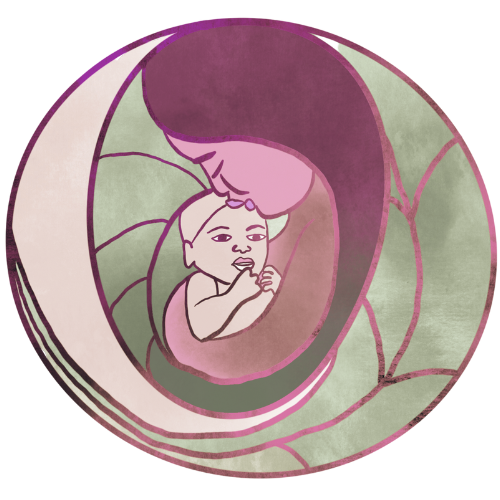The Four Ps: Partner Roles During Labor and Birth, by Baltimore Midwife Nets Manela
My clients and their partners often inquire about how the father or partner can be involved and supportive during birth. Of course, there is a wide range of involvement that is desired. Some partners want to be hands-on and right there the whole time. Others, for religious, cultural, or personal reasons, would rather remain removed. Some mothers desire closeness and others space. Seeing a loved-one working through the intensity of contractions can lead to feelings of helplessness and overwhelm. I offer here a framework and a few suggestions to help you, as the partner, understand and optimize your role.
A framework:
The forces of Labor/Creator/G-d is the primary actor. The baby is at the center. The mama/birthing person centers the baby. The partner centers the mama and the baby.
The midwife centers the family, centering the mother, centering the baby. The baby participates in being born. The mother actively surrenders and makes way for labor and baby to come through her.
The rest of us are like gardeners: we can’t make the plants grow, but we can water and nourish the soil and sing to our plants. The whole process, the whole scene, is devotional, no matter your beliefs. Here’s what you can do to help.
The four Ps for a satisfying and rewarding partnership during labor and birth:
Preparation, Protection, Provision, and Pleasure.
Preparation:
The primary goals here are achieving a mindset of trust in the birth process and reaching alignment together as a couple. Getting there likely means educating yourselves together through childbirth classes, books, videos, asking your midwife and/or doula questions etc.
What does undisturbed or physiological birth mean, and why is it so important? What are the phases of labor? How can we recognize them? What can we do to optimize the experience through each phase? What is labor etiquette? What does my love desire for her experience and our baby? What is important to me?
Protection:
Laboring women/people are so powerful and simultaneously so vulnerable. A smooth labor demands relaxation and surrender, which is not compatible with fighting and self-advocacy. All that should ideally happen beforehand. Nevertheless, sometimes situations arise that require defending her boundaries and your shared wishes and commitments. Know what these are and be prepared to voice them. Ideally, set yourselves up for success by hiring aligned care providers and communicating in advance with family and community members regarding when and how their presence is welcome. Sometimes space and privacy are the primary need. Don’t be afraid to ask for what she wants on her behalf so she can focus on her labor.
Provision:
To center another being requires that you take excellent care of yourself. Keep yourself hydrated, rested, fed, and calm, to the best of your ability. Remember to breathe and align your body in ergonomic positions. You will be an important player before, during, and after birth. Many tasks will arise for the doing, which is a relief for the partner who prefers discreet, active tasks to keep busy and calm. Being in labor is sometimes likened to running a marathon, mostly because it’s a physical activity that can take a long time. You can help your partner stay hydrated, nourished, rested, and confident by quietly offering water and electrolyte rehydration drinks, easy-to-digest snacks, supplies for comfortable positioning such as extra pillows, a birth ball, a towel under the knees, and words of praise and encouragement. She will need to focus on her labor and drift into a different state of consciousness. You can be the bridge to the outer world by taking care of the space, tending to other children, making arrangements, and bringing her anything she requests. Oftentimes we midwives know it’s time to come to the house when dad/partner is the one to call and update us on the intensification of labor.
Pleasure:
What can you do to make this a more pleasurable experience for your love? Oxytocin is the love hormone. More oxytocin makes for stronger, yet less painful contractions. Did you know that orgasm is possible during birth? And who better to cultivate a pleasurable experience for a laboring woman than her lover - the one who knows her the most intimately! Breathe together. Listen attentively to her requests. Heed her yes and her no. Tell her she is beautiful and strong. Think of the five senses: dim lighting, candles, soft music (or silence, or whatever she chooses), delightful smells, loving touch, massage, kissing and cuddling, and your full presence can help your love relax into the experience, which brings more oxygen and oxytocin to the baby, setting the tone for a safer, more efficient, and deeply bonding experience for your family.
I hope that you find these suggestions helpful. Please reach out for more ideas and for care in the Baltimore area. Blessings on your journey!
Nets Manela
Fruit of the Womb Home Birth and Healing
240-997-5319

